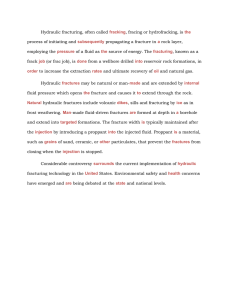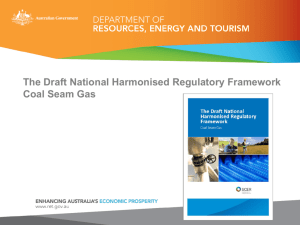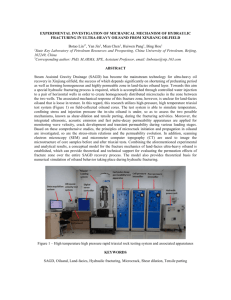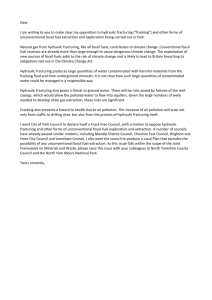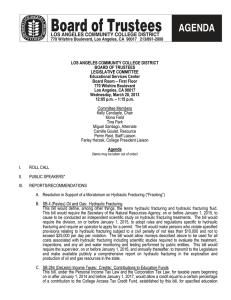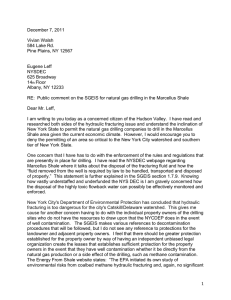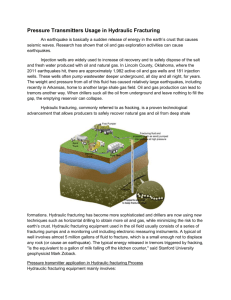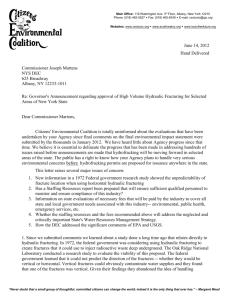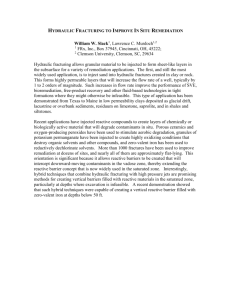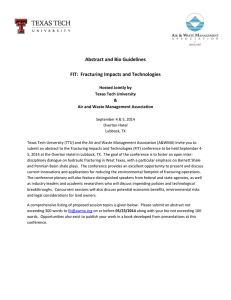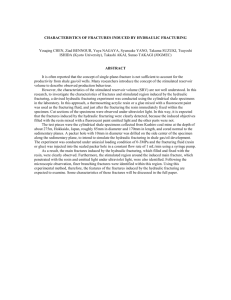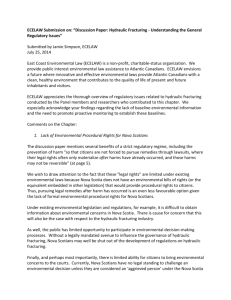NatGasStudy - University of Colorado Boulder
advertisement
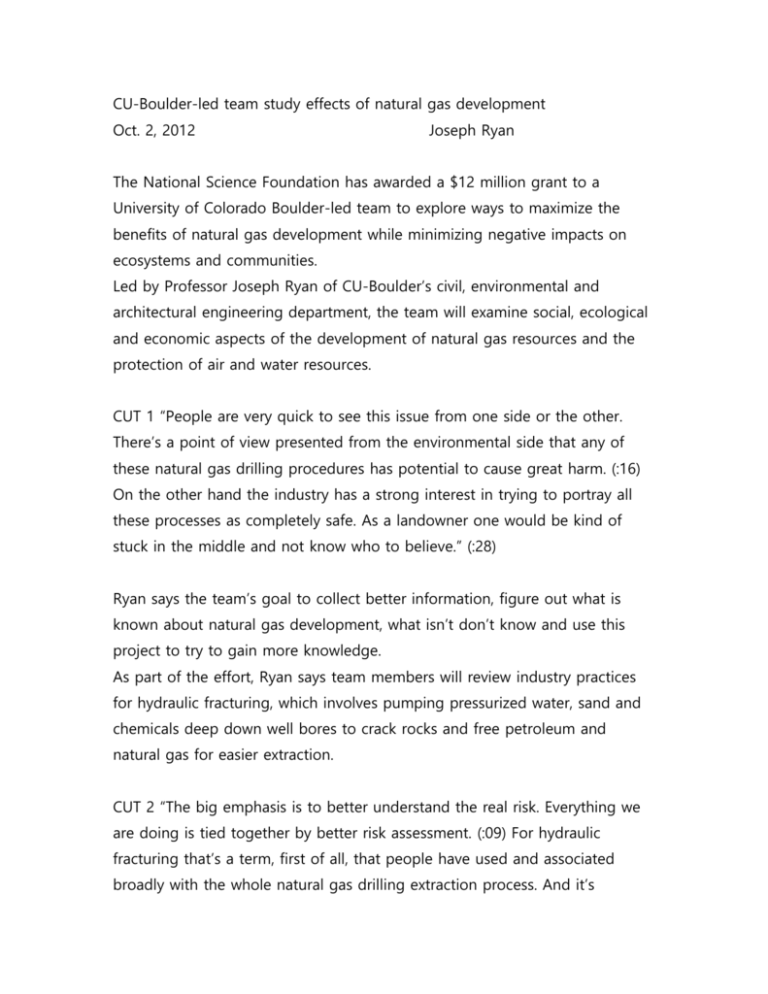
CU-Boulder-led team study effects of natural gas development Oct. 2, 2012 Joseph Ryan The National Science Foundation has awarded a $12 million grant to a University of Colorado Boulder-led team to explore ways to maximize the benefits of natural gas development while minimizing negative impacts on ecosystems and communities. Led by Professor Joseph Ryan of CU-Boulder’s civil, environmental and architectural engineering department, the team will examine social, ecological and economic aspects of the development of natural gas resources and the protection of air and water resources. CUT 1 “People are very quick to see this issue from one side or the other. There’s a point of view presented from the environmental side that any of these natural gas drilling procedures has potential to cause great harm. (:16) On the other hand the industry has a strong interest in trying to portray all these processes as completely safe. As a landowner one would be kind of stuck in the middle and not know who to believe.” (:28) Ryan says the team’s goal to collect better information, figure out what is known about natural gas development, what isn’t don’t know and use this project to try to gain more knowledge. As part of the effort, Ryan says team members will review industry practices for hydraulic fracturing, which involves pumping pressurized water, sand and chemicals deep down well bores to crack rocks and free petroleum and natural gas for easier extraction. CUT 2 “The big emphasis is to better understand the real risk. Everything we are doing is tied together by better risk assessment. (:09) For hydraulic fracturing that’s a term, first of all, that people have used and associated broadly with the whole natural gas drilling extraction process. And it’s important to recognize that it’s actually just a very short-term part of the process.” (:26) The fracturing fluid left in the ground, as well as the fluid that returns to the surface, known as “flowback,” present potential ecological and health risks if not handled properly, Ryan says. CUT 3 “In the very few cases where there has been ground water contamination documented, it actually has been attributed to faulty well casings. (:09) So not the hydraulic fracturing process itself but just how they are actually sealing the well from the formations around it.” (:18) Another concern is that hydraulic fracturing could force fluid into existing fractures and find its way to water sources. CUT 4 “What is believed there is that the hydraulic fracturing doesn’t create pathways but that it could if there are existing pathways through natural fractures that hydraulic fracturing may play some role in activating the flow along those natural faults and fractures in the formation. (:21) And there are indications that has happened in some of the sites in Garfield County where some of the chemicals involved in the fracturing showed up in a seep called West Divide Creek.” (:32) Ryan says the project will focus on the Rocky Mountain region, where natural gas development, as well as objections to it, are increasing. CUT 5 “There’s some unique aspects to the story in the Rocky Mountain Region. There seems to be a greater concern about air quality because we have some basins that don’t get great circulation and some of the air quality problems that build up as the release of the natural gas and the volatile organic compounds that lead to the formation of ozone get trapped. (:24) And also water quality problems. When water’s more scare the importance of having enough water of good quality becomes heightened.” (:32) The team assembled by Ryan includes air and water quality experts, social scientists, human health experts, information technology experts and a substantial outreach and education effort. For a more information on this study go to http://www.colorado.edu/news/releases/2012/10/02/nsf-awards-cu-boulderled-team-12-million-study-effects-natural-gas. -CU-
